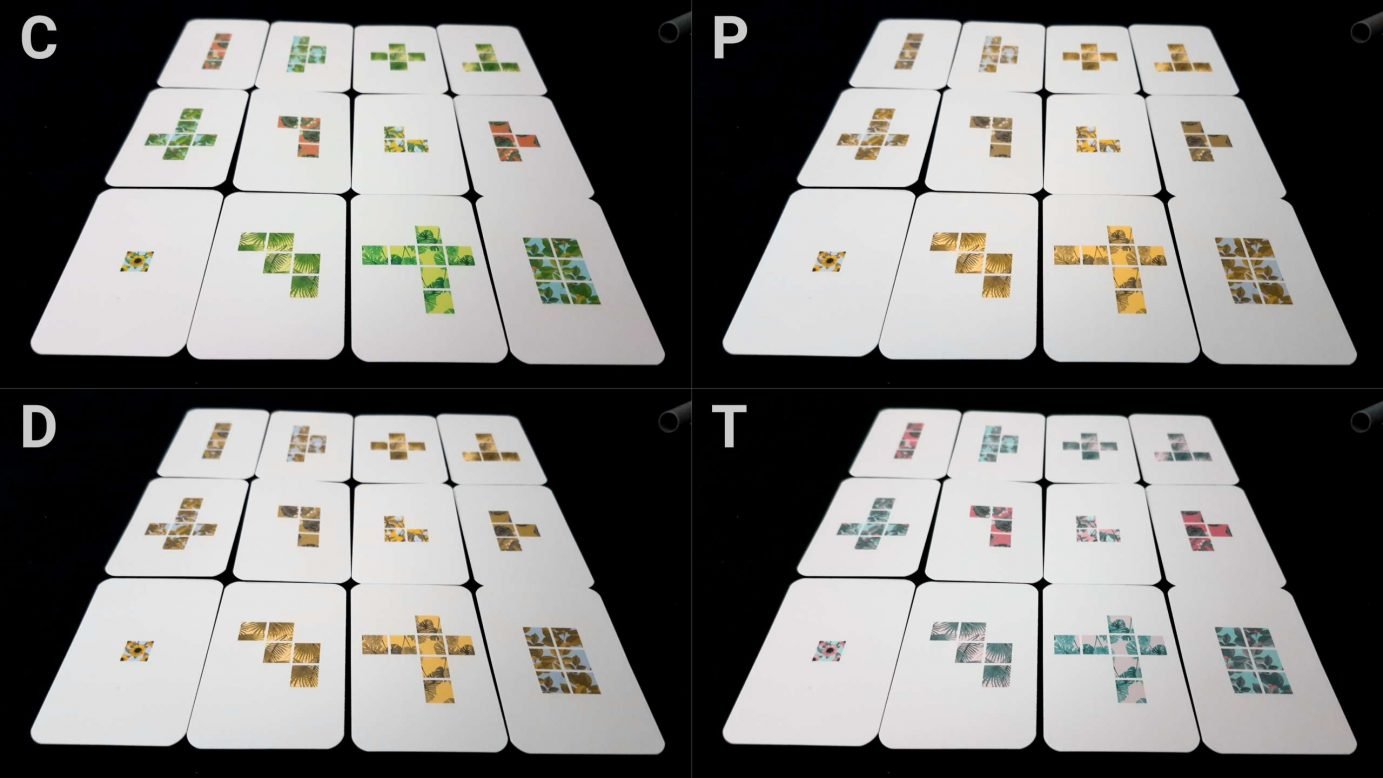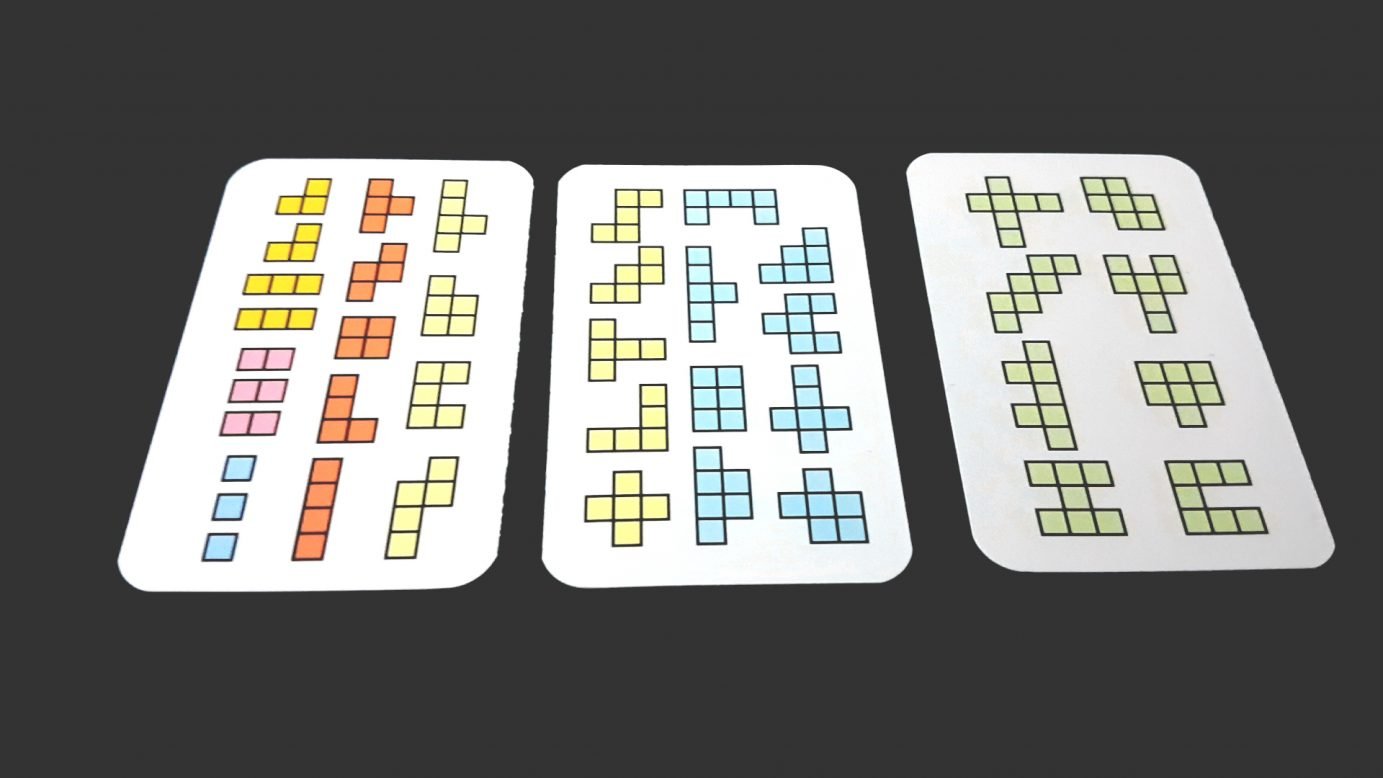Table of Contents
| Game Details | |
|---|---|
| Name | Second Chance (2019) |
| Review | Meeple Like Us |
| Complexity | Light [1.14] |
| BGG Rank | 2551 [6.68] |
| Player Count | 1-6 |
| Designer(s) | Uwe Rosenberg |
| Buy it! | Amazon Link |
Version Reviewed
Introduction
Second Chance was… well, a kind of second chance for polyomino placement games on Meeple Like Us. Until they start getting meaner, our interest will remain muted at best. Interestingly, this game is actually worth your attention because of how aggressively it moves away from the obvious goal and into much calmer territory. It’s like an adult colouring book made into a board game, and it’s okay. We gave it three stars in our review. It’s absolutely fine even if it’s not a game I’d really be able to advocate seeking out for the fun within the box.
Is a game this Zen going to do well in an accessibility teardown? I hope so. Games get two chances to shine on Meeple Like Us, and this is… wait for it… Second Chance’s second chance.
Yeah, that wasn’t as good as I was hoping it’d be either.
Let’s just get on with it.
Colour Blindness
Colour blindness is not a problem – colour use is only ever decorative. It’s the shape that matters, colour has no impact at all.

On your own pad, you use whatever pen(s) you want and make whatever distinction between the different pieces that you like. It’s all entirely within your control.
The only minutely problematic area is in the reference cards where colour is used to indicate pieces of equivalent segment size. You can still easily count them yourself though and in any case it’s only a reminder of what the game itself is going to send your way.

We strongly recommend Second Chance in this category.
Visual Accessibility
The pads provided are quite small, but the great thing about a game like this is that it permits easy use of more accessible versions. Open up Microsoft Word, give yourself a 9×9 table of maximum size. Print it and that’s your new ‘large print’ sheet. There’s nothing on the pad itself that is going to be a visual accessibility issue. You could even hand-draw a player grid onto a poster if you wanted. Size is, to an extent, within your control.
It’s a shame then that we can’t really be so appreciative of the cards in the game, because this is the real sticking point of play. The benefit of using a pad is that you get flexibility. The drawback is that you lose tactility. There’s no way for pieces to nestle together like in Patchwork or Barenpark. That means that determining where you can fit a piece on your pad is going to be challenging.
On the plus side here, the sheet is paper and so you can mark it in whatever way you like to indicate squares have been used. You can indent them, place pennies on them, whatever. That side is as accessible as it can realistically be. The problem is that cards often have complex shapes on them and they defy easy description in a way that results in actionability.

How would you describe the one on the left? ‘Its like a U with three squares in each of its legs and one connecting them’. The one on the right? ‘A three by three grid with a corner bitten out’. It’s not impossible, but the difficulty comes in taking these weird and occasionally ambigious descriptions and relating them to a board where you can freely flip, rotate and mirror shapes.

Look at the third card here. Third down on the first column. Describe that in a way that would permit someone to visualise it and how it relates to their pad. It’s not impossible, but it’s going to involve a lot of discussion and communication until the full set of shapes has been internalised and a group-specific vocabularly evolved.
That’s primarily going to be an issue for someone with total blindness – those with less severe visual impairments will likely do better. Both groups though are likely to be dealing with the fact that they have a relatively large board with no easy way of exploring the possibility space by touch.
We can’t really recommend Second Chance in this category.
Cognitive Accessibility
Spatial intelligence is the key her. Players will need to interpret shapes, rotate them, mirror them and flip them in mind. Some of the shapes are harder with regards to this than others. The cognitive burden of this can be alleviated a touch by allowing players to rotate cards and perhaps even use a mirror to see the flipped forms. There’s still a translation process players will need to go through where they attempt to fit those shapes onto their pad. And then, fitting them in a way that ensures that they’re not disadvantaged when future shapes appear.
This is the largest fluid intelligence burden on players as Second Chance requires no literacy, no real numeracy, and can handle scoring and winning conditions through comparison rather than counting.
For those with memory impairments alone there is some benefit that comes from knowing deck composition, and while the burden here is lowered through the provision of reference cards it doesn’t help with regards to tightening up the possibility space. By that I mean – it’s easy to see what’s there to come out of the deck but harder to know what that means based on what’s already come out.
This said, it’s not an especially demanding game in this category and if the spatial aspects are not likely to cause problems there’s little else in the game about which to be concerned. We’ll recommend Second Chance in both of our categories of cognitive accessibility.
Physical Accessibility
Much as with the section on visual accessibility, the fact you’re using a paper pad opens up a lot of options that wouldn’t exist with more formal components. A huge sheet marked off with crosses or ticks would be just as effective as a route by which you play the game as the provided components. You’d lose the idle satisfaction of annotation though and I think in a game like this that’s an important consideration.
However, players aren’t stuck with using paper. If someone is set up to use an accessible computing device anything from a text editor to a spreadsheet can be used to offer a fully inclusive experience.
If verbalisation is required it’s a little trickier than it could be because there are no grid references on the pad, but there’s absolutely no reason someone couldn’t add them in or create a printable version where they’re present. In that case a physically impaired player need only indicate a card (one or two), a location, and an orientation. The latter is likely to be the toughest to do but a suitable vocabulary can certainly be workshopped. ‘Place card one so that its longest side is against cell B5’ as an example. It won’t be seamless, at least to begin with, but it’s fully doable.
We’ll recommend Second Chance in this category.
Emotional Accessibility
The use of a starting shape is an important element here because it creates a degree of emotional distance in what could otherwise be an awkward game. We made note in the NMBR 9 teardown for example that since everyone has the same start and same options you can’t simply put a loss down to bad luck. Second Chance gives back that psychological cover, for better or for worse.
Second Chance does have player elimination (boo) but offers players about to be eliminated a life-line through the name-drop second chance mechanism. By the time this comes into effect everyone is pretty much in the same position anyway so players are rarely eliminated for long and the game is so quick to play that it doesn’t sting.
Other than this, Second Chance is a very pleasingly collegiate game and has no player versus player elements, no take-that mechanisms, and very little to agitate a player with an emotional control condition. We’ll recommend it in this category.
Socioeconomic Accessibility
None of the art in the game shows any human characters, and the manual is pleasingly gender neutral.

It comes in at under £16 RRP and supports from one to six players. It’s thus got a very low price-per-player ratio. It’s easy and intuitive enough that you can bring it out at any gaming occasion you can envisage. Very strongly recommended in this category.
Communication
No literacy is required, and there’s no need for formal communication during the game. We’ll strongly recommend Second Chance in this category.
Intersectional Accessibility
A communication impairment intersecting with either a visual or physical impairment is going to make the game considerably more challenging to play. Other than that, there are no obvious major intersectional issues.
Second Chance plays very briskly and really the only downtime is when you’re waiting for someone to finish up with their annotations and move on to the next piece. As such, the speed of play is set by the player that’s spending the most time decorating their pad. The box quotes a fifteen minute upper bound for play-time and that feels about right. As such it’s short enough that it won’t exacerbate issues of discomfort or distress. It’s lightweight and quick enough to fit in around conditions with modulating severity, and sufficiently small footprint that you could play it in a whole range of restricted scenarios.
Conclusion
I’m delighted to see that Second Chance will be elevating itself into noble company when we next do a refresh of our Accessible Games On a Budget article. Aside from it being a poor fit for players with visual impairments, it manages a good sweep of recommendations across the board. That’s always a pleasing result for me on the site.
Interestingly though it doesn’t come quite up to the standards of Patchwork, also by the same designer, which would remain our recommendation for most categories of accessibility – including for blind and visually impaired players. Cottage Garden too also managed a tremendously strong performance here. This is a category of games in which players with all kinds of accessibility needs are well served.
We gave Second Chance three stars in our review. It’s enjoyable, easy going fun and if you’re in the mood for a game which will indulge your desire to doodle, it’s one that most people will be able to actually play.
A Disclaimer About Teardowns
Meeple Like Us is engaged in mapping out the accessibility landscape of tabletop games. Teardowns like this are data points. Games are not necessarily bad if they are scored poorly in any given section. They are not necessarily good if they score highly. The rating of a game in terms of its accessibility is not an indication as to its quality as a recreational product. These teardowns though however allow those with physical, cognitive and visual accessibility impairments to make an informed decision as to their ability to play.
Not all sections of this document will be relevant to every person. We consider matters of diversity, representation and inclusion to be important accessibility issues. If this offends you, then this will not be the blog for you. We will not debate with anyone whether these issues are worthy of discussion. You can check out our common response to common objections.
Teardowns are provided under a CC-BY 4.0 license. However, recommendation grades in teardowns are usually subjective and based primarily on heuristic analysis rather than embodied experience. No guarantee is made as to their correctness. Bear that in mind if adopting them.
